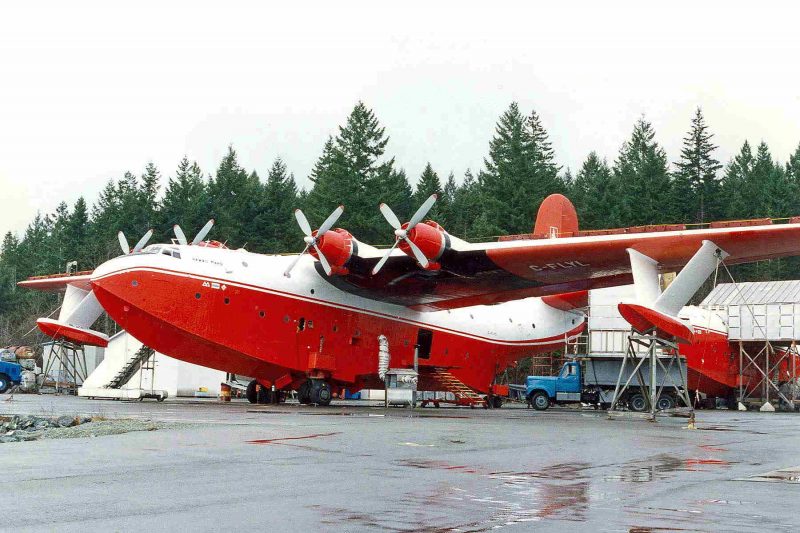Have you got $3 million to spare? If you have, it would possibly buy you the Hawaii Mars – one of the two remaining, largest-ever, long-range WWII flying boats. It was, until recently, working as a water bomber, which is rather impressive considering that it is more than 70 years old.
The JRM Mars bombers were built by the Glenn J Martin Company during WWII. The idea was to use them as patrol bombers, but due to problems and delays in production, they were only ready by 1943 when there was no longer the need for such large flying- boat bombers. The US Navy decided to have them converted into transport aircraft, which proved to be so successful that the Navy ordered 20 more.
As the first craft, Hawaii Mars, was brought into service in 1945 and the war was by then almost over, the Navy decided to cancel the original order and took delivery of only the five planes already in production. These five new cargo transport sea-planes named: Philippine Mars, Hawaii Mars II, Marshall Mars (lost in 1950 due to an engine fire), Marianas Mars (crashed in 1961) and Caroline Mars (destroyed by a typhoon in 1962), were taken into service. They were used to great advantage during the remainder of the war, after which the US Navy continued to find these extra large cargo flying boats of inestimable value, particularly for the transport of naval cargo on the San Francisco – Honolulu route.
By 1956 the Navy chose to retire the four remaining JRM Mars cargo carriers. They were flown to NAS Almeda where they were beached and eventually, in 1959, sold to a foresting consortium in Canada – the Forest Industries Flying Tankers (FIFT), with the idea of converting them to help fight fires. FIFT also purchased the navy’s store of spare parts for these huge aircraft, which certainly contributed to their being well maintained for so long.
British Columbia has vast forests covering remote areas, making fire-fighting extremely difficult. The huge JRM Mars aircraft – the largest operational flying boats in the world, were ideal, for they did not need a base with a runway. All that was required was a few kilometres-long strip of open water and, since B.C. is plentifully supplied with lakes and has a coastline with numerous bays, it was ideal territory for the use of a large flying-boat air tanker.
The four planes were converted to fire-fighting water-tanker bombers by changing the cargo hold, as well as some of the fuel tanks into water tanks and then adding water scoops. This enabled the flying boat while cruising low over the water surface, to scoop up about 27,200 litres of water in the space of about 30 seconds.
The flying ‘tankers’ proved to be very successful in fighting fires for many years. Quite often they were flown to various fire hotspots to help, as in 2003 when Flying Tankers Inc. flew them to fight the fire threatening Kelowna. Sometimes, these huge planes were flown to air shows where they were able to demonstrate their capabilities.
In 2007, the last two remaining JRM Mars planes – the Philippine Mars and the Hawaii Mars, were bought by the Coulson Forest Company which renovated and upgraded them before contracting them out for fire-fighting purposes. Hawaii Mars, for example, was contracted to assist with the Californian Wildfires in that year.
As time marched on these two very old air tankers – which had been in use for almost 70 years, were becoming too expensive to maintain and were no longer in demand, having been superseded by other modern, smaller and more versatile aircraft. The decision was thus made to finally retire them and put them on the market.
